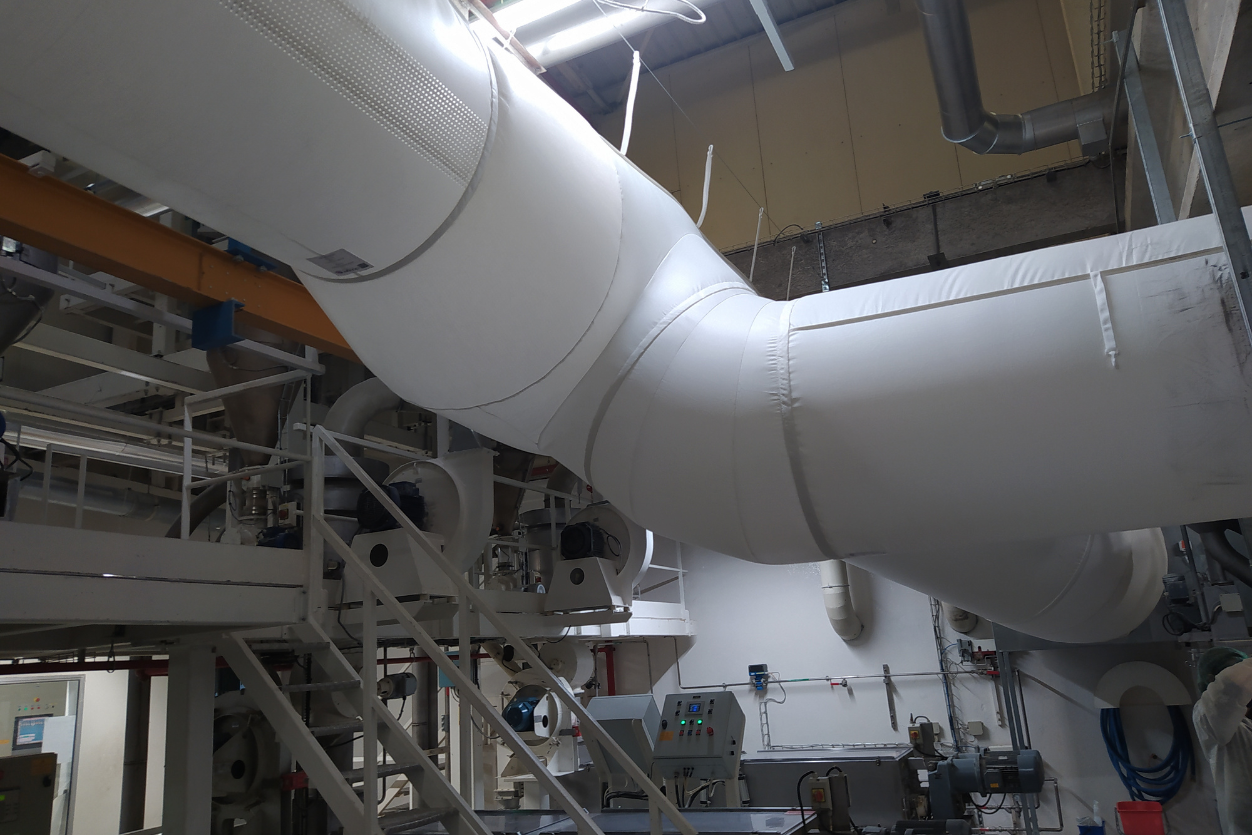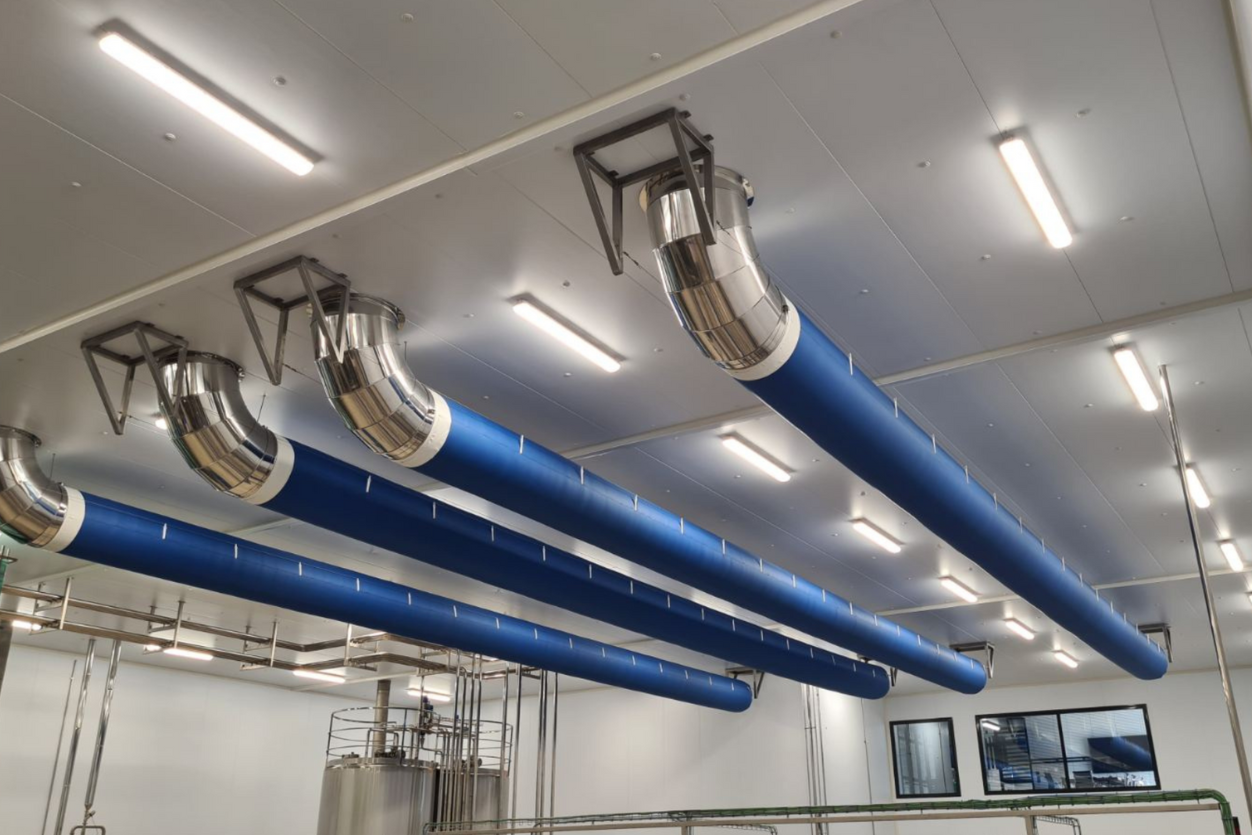Textile ducting range
ATC textile ducting is a technology for refrigerating, air-conditioning, refreshing, ventilating or heating an atmosphere or even transporting treated air. It can be used in all types of application: industry, public buildings, very high buildings, food-processing plants, logistics buildings, tertiary activities and more.
Height of premises
Aesthetic constraints & Diffusers’ shapes and sections
Supply and installation costs
Available position & Congestion when ventilation stops
FABRIC DUCTING
Textile ducting is a technology for refrigerating, air-conditioning, refreshing, ventilating or heating an atmosphere or even transporting treated air. It can be used in all types of application: industry, public buildings, very high buildings, food-processing plants, logistics buildings, tertiary activities and more.
From an installation point of view
Textile ducts are light, resistant products with few restrictions.
Textile ducts are designed to be easily removable.
They can be adapted to the constraints found on all types of premises: They can be in any shape and be adapted to all types of air treatment. They are products that are upgradeable and modular over time.
Principle
In the case of textile diffusers AIRNÉO of RADIANT type, air discharge is exclusively through porous material strips in judicious places and dimensions in order to create the desired charge loss and let through the desired airflow. This diffusion brings about optimum user comfort, almost immediately next to the duct, thanks to low discharge speeds around 0.2 to 1 m/s. Thus, the movements in the mass of discharged air are mainly due to differences in temperature between the various masses of air concerned.
Download Brochure

Better air quality
Thanks to the porous character of the textiles used, the diffusion ducts of RADIANT type, besides their diffusion function, give a particularly interesting terminal filtration. This guarantees an effective protection for products and staff, when textile diffusers are used in environments sensitive to hygiene such as the food and pharmaceuticals industries. The use of textile diffusers of RADIANT type requires nevertheless an effective filtration upstream (filters G4, F7…), which allows:
Better working conditions
When premises have low ceilings (from 2 to 4 m approx.), the duct allows to avoid any sensations of draughts brought about by the blowing system (low residual speed).
Better process conditions
Ideal when products require a perfectly homogeneous atmosphere and low residual speeds. For instance, in rooms with need for dust control, metrological rooms, laboratories…
Better hygiene
The AIRNÉO duct of RADIANT type is entirely washable (machine wash), ensuring perfect hygiene.
